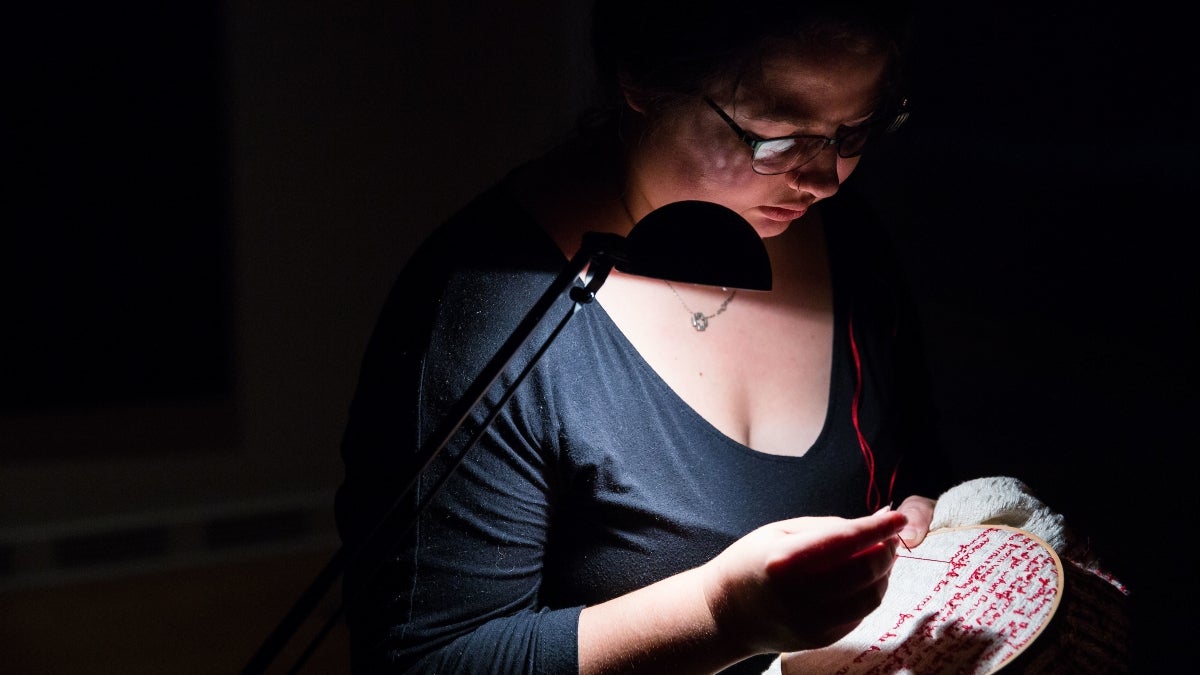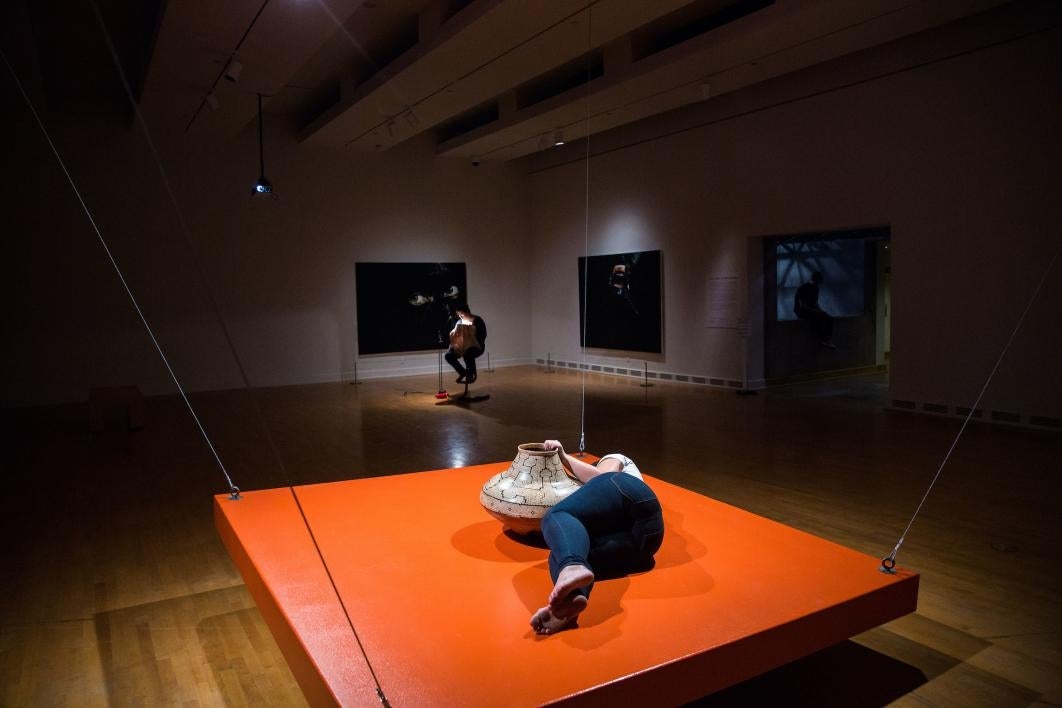In the art world, Ana Mendieta’s name is a source of sorrow, reverence and inspiration. The Cuban-born American artist’s mysterious death in 1985 is a point of intrigue and has led to a resurgence of interest in her artwork in recent years.
But her work stands apart from the scandal.
Mendieta synthesized and advanced emergent art forms of the early ’70s, including performance, body art, earthworks, photography and film.
This semester, the ASU Art Museum is exploring her legacy in "Energy Charge: Connecting to Ana Mendieta," which features an iconic selection of Mendieta’s work from 1972–1985 alongside the work of five contemporary artists from across the United States.
Like Mendieta, the contemporary artists featured in the exhibition, Ana Teresa Fernández, Kate Gilmore, Simone Leigh, Gina Osterloh and Antonia Wright, explore issues of race, gender and politics through their bodies. For instance, in Ana Teresa Fernández’s "Erasure" series, Fernández paints her body completely black as a response to the 2014 disappearance of 43 young male students from Ayotzinapa, Mexico, who were presumably killed for staging protests that disrupted their small town.
This performative process — using the body to create artwork — is echoed in the work of the local artists and ASU students and faculty who are participating in the live "Energy Charge" performance series, which takes place throughout the exhibition’s run.
“The live bodies in the museum’s galleries bring a whole other layer of content and experience,” exhibition curator Heather Sealy Lineberry said.
“Last Thursday night, dance faculty members Eileen Standley and Melissa Britt presented a performance with a dancer in her ninth month of pregnancy, who moved in surprising and beautiful ways and was contrasted with the female bodies in the projections and photographs in the galleries,” Sealy Lineberry said. “Mendieta often talked about issues of birth and rebirth in her work, arising from her personal history as an immigrant and leaving her homeland at a young age, and having the pregnant body in her spaces brought a poignant connection to this emotional undercurrent.”
“I think part of the reason I’m drawn to Mendieta’s work so much is because it engages with the body,” said Raji Ganesan, an ASU student pursing a degree in informatics, who is performing a piece next month as part of the series.
“We carry injustices in our bodies, and, for me, dance is what allows me to connect to that history,” she said.
Ganesan’s piece, "Negotiations," is a collaboration with two ASU alumni, Carly Bates and Allyson Yoder, and was originally performed in March of this year as the performers’ theses for Barrett, the Honors College. She said she is excited to have the opportunity to perform the piece again in conversation with the artwork in the museum.
“Ana Mendieta, who was working in the 1970s, actually felt that live performance was too immediate and the audience needed a distance from the work to fully contemplate and respond to it,” Sealy Lineberry said. “The performance series recognizes the changes in the field since that time, and presents a different perspective on the possibilities of live performance.”
This week you can catch two performances on Thursday, Oct. 6 — Neha Vedapathak’s "Transformation" and the lighting of Ana Mendieta’s "Ñáñigo Burial" — and two performances Saturday, Oct. 8 — Shannon Ludington’s "As I Cannot Write" and Kate Gilmore’s "All I’m Taking with Me."
"Energy Charge: Connecting to Ana Mendieta" is on view at the ASU Art Museum through Dec. 31. Check out the full list of programs and performances at asuartmuseum.asu.edu/energy-charge.
This exhibition is generously supported by the Diane and Bruce Halle Foundation. Additional support comes from the Andy Warhol Foundation for the Visual Arts, the Helme Prinzen Endowment, the Herberger Institute for Design and the Arts, Diane Harrison, the ASU Art Museum Creative Impact Board and the members of the ASU Art Museum.
The exhibition was curated by Heather Sealy Lineberry, senior curator and associate director, and Julio Cesar Morales, curator, with assistance from Windgate Curatorial Interns Angelica Fox and Kev Nemelka. Special thanks to the exhibiting artists and lenders, and the Estate of Ana Mendieta.
Top photo: Artist Shanon Ludington performs "As I Cannot Write," a piece that recreated an embroidery sampler by Elizabeth Parker, a young 19th-century woman who used this traditionally passive and feminine craft to tell the story of her rape on Oct. 1. Ludington will be repeating her performance on Oct. 8 and Nov. 12. Photo by Deanna Dent/ASU Now
More Arts, humanities and education

ASU graduate education programs are again ranked among best
Arizona State University’s Mary Lou Fulton College for Teaching and Learning Innovation continues to be one of the best graduate colleges of education in the United States, according to the…
ASU FIDM students to see their designs on the runway at Uncertainty Fashion Showcase
Nola Hill is perfecting every stitch of her fashion design collection, which she started conceptualizing last summer.She is among 30 ASU FIDM fashion design students who have been working late into…

ASU+GSV Summit brings experts together to discuss innovation in education
This week, Arizona State University President Michael Crow and other university leadership joined education and learning experts from around the globe at the ASU+GSV education technology summit in…







